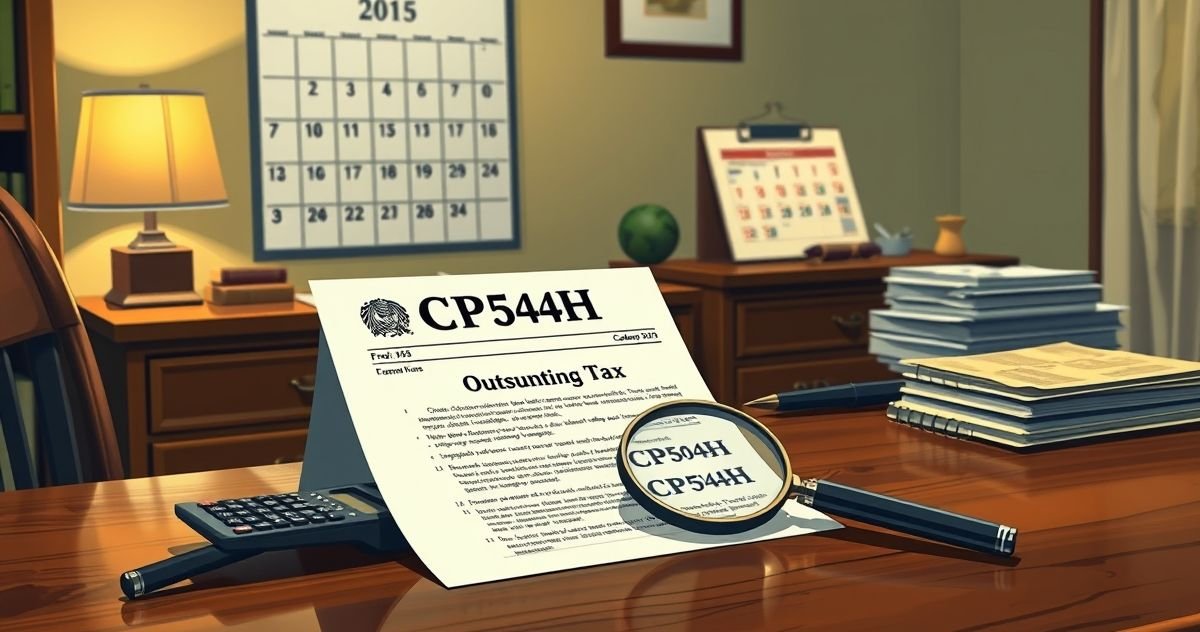What is a CP504H Notice?
The CP504H Notice is a formal notification issued by the Internal Revenue Service (IRS) to inform taxpayers of an outstanding tax debt. This notice is a final reminder before the IRS takes more aggressive collection actions, such as levying your state tax refund or placing a lien on your property. It is an important document that requires your immediate attention to avoid further penalties and additional interest charges. Understanding the intricacies of this notice can help taxpayers navigate their options for resolving their tax debts effectively.
Primary Purpose of the CP504H Notice
The primary purpose of the CP504H Notice is to alert taxpayers about unpaid tax liabilities and to urge them to resolve their debts before more severe actions are taken by the IRS. This notice indicates that the taxpayer’s account is seriously delinquent, reflecting the urgency needed to address the issue. By sending a CP504H Notice, the IRS seeks to prompt the taxpayer to take specific actions, such as making a payment, setting up a payment plan, or disputing the liability if applicable.
Key Features or Components of the CP504H Notice
- Debt Notification: The notice specifies the amount owed, including taxes, penalties, and interest. This helps taxpayers understand the total liability they need to resolve.
- Deadline for Response: The CP504H outlines specific deadlines by which taxpayers should respond to avoid escalation in penalties or further IRS action.
- Consequences of Non-Compliance: It highlights potential actions the IRS may take, such as levies on state tax refunds or the filing of a federal tax lien, which can severely impact the taxpayer’s creditworthiness.
- Contact Information: The document includes details on how to contact the IRS or seek assistance regarding the notice.
- Instructions for Payment or Dispute: It provides guidance on how to make payments or dispute the assessed liability if the taxpayer believes it is incorrect.
Relevant Filing or Compliance Requirements
Compliance with the CP504H Notice involves timely addressing the debt mentioned. Taxpayers have several avenues for resolution, including:
- Full Payment: Paying the full amount owed eliminates the debt and avoids further interest and penalties.
- Installment Agreement: Taxpayers unable to pay in full may propose an installment plan, allowing them to pay over time.
- Offer in Compromise: If eligible, taxpayers can apply for an Offer in Compromise, which allows settling the debt for less than the amount owed.
- Disputing the Debt: If a taxpayer believes the debt is incorrect, they can dispute it by providing documentation to support their claim.
Penalties or Consequences for Non-Compliance
Failure to comply with the CP504H Notice can result in significant consequences:
- Increased Penalties and Interest: Continued non-compliance will accrue additional penalties and interest, increasing the overall debt.
- State Refund Levy: The IRS may seize state tax refunds to offset the unpaid federal tax debt.
- Federal Tax Lien: A lien may be placed on the taxpayer’s property, impacting their ability to secure loans or sell assets.
- Reduced Credit Score: A lien can adversely affect the taxpayer’s credit score, limiting future financial opportunities.
Importance or Significance in Tax Resolution
The CP504H Notice plays a crucial role in tax resolution and financial compliance. By addressing this notice promptly, taxpayers can:
- Avoid Escalated Enforcement Actions: Prompt resolution can prevent severe measures like levies and liens, which complicate financial matters.
- Restore Compliance: Taking action shows willingness to comply with tax obligations, helping improve the taxpayer’s standing with the IRS.
- Maintain Financial Stability: Managing the debt assures taxpayers of more predictable financial conditions, avoiding disruptions caused by enforced collections.
- Access to Resolution Options: Early action increases the chances of negotiating favorable terms, such as installment plans or compromises.
In conclusion, the CP504H Notice serves as a critical juncture in maintaining tax compliance and preventing severe enforcement actions. By understanding its components, responding promptly, and exploring available resolution options, taxpayers can efficiently manage their tax obligations and maintain their financial health.



